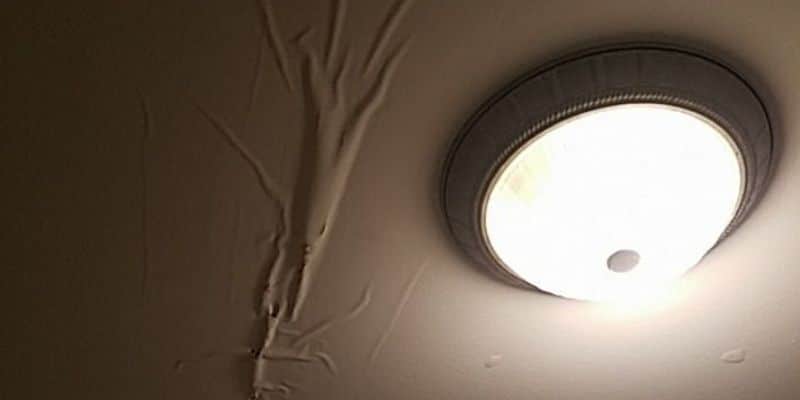Identify Common Causes for Leak Issues in Your Home
Identify Common Causes for Leak Issues in Your Home
Blog Article
We have come across this post involving How to detect water leaks in your home down the page on the web and thought it made good sense to write about it with you on my blog.

Leaks not just trigger waste of water yet can also create unnecessary damage to your house and promote unwanted natural development. By comprehending and also looking for day-to-day situations that trigger leaks, you can protect your residence from future leaks and also unnecessary damage.
Encroaching origins
A lot of water leaks begin outside your home rather than inside it. If you see an unexpected decrease in water pressure, say in your faucet, take time to head out and also examine your backyard. You may notice damp patches or sinkholes in your backyard, and that could imply that tree origins are invading water lines creating water to seep out. You can have your plumber look for intrusion, specifically if you have trees or shrubs near your home.
Corroded water supply
This may be the reason of staining or warping on your water pipes. If our plumbing system is old, think about replacing the pipelines given that they are at a higher threat of corrosion than the more recent models.
Defective Pipe Joints
Pipe joints can weaken over time, resulting in water leaks. If you have noisy pipelines that make ticking or banging noises, specifically when the warm water is transformed on, your pipe joints are probably under a lot of pressure.
Immediate temperature adjustments.
Severe temperature level adjustments in our pipelines can trigger them to expand and also contract all of a sudden. This expansion and also tightening might trigger splits in the pipelines, particularly if the temperature level are below freezing. If you kept an eye on just how your plumbing functions, it would certainly be best. The visibility of the previously mentioned situations regularly indicates a high risk.
Poor Water Connectors
At times, a leak can be created by loose hose pipes and pipes that provide your home appliances. In instance of a water connections leakage, you might discover water running directly from the supply line or pools around your devices.
Clogged Drains
Obstructed drains may be frustrating and also inconveniencing, however they can occasionally end up triggering an overflow bring about burst pipelines. Maintain removing any type of products that might decrease your drains pipes that could block them to stay clear of such hassles.
All the above are reasons for leakages however not all water leakages arise from plumbing leaks; some leaks could originate from roofing system leakages. All leakages should be repaired right away to stay clear of water damage.
Leakages not just create waste of water yet can also trigger unneeded damages to your home and promote undesirable organic development. By recognizing and looking for daily circumstances that create leakages, you can shield your home from future leaks and unnecessary damage. Today, we will look at 6 leak causes that may be causing your pipelines to trickle.
At times, a leak can be created by loosened pipes and also pipelines that provide your devices. In instance of a water links leakage, you might see water running straight from the supply line or pools around your devices.
How To Check For Water Leak In Your Home
How To Check for Leaks
The average household's leaks can account for nearly 10,000 gallons of water wasted every year and ten percent of homes have leaks that waste 90 gallons or more per day. Common types of leaks found in the home are worn toilet flappers, dripping faucets, and other leaking valves. These types of leaks are often easy to fix, requiring only a few tools and hardware that can pay for themselves in water savings. Fixing easily corrected household water leaks can save homeowners about 10 percent on their water bills.
To check for leaks in your home, you first need to determine whether you're wasting water and then identify the source of the leak. Here are some tips for finding leaks:
Take a look at your water usage during a colder month, such as January or February. If a family of four exceeds 12,000 gallons per month, there are serious leaks.
Check your water meter before and after a two-hour period when no water is being used. If the meter changes at all, you probably have a leak.
Identify toilet leaks by placing a drop of food coloring in the toilet tank. If any color shows up in the bowl after 10 minutes, you have a leak. (Be sure to flush immediately after the experiment to avoid staining the tank.)
Examine faucet gaskets and pipe fittings for any water on the outside of the pipe to check for surface leaks.
Undetected water leaks can happen without the home or business owner even realizing. If you suspect a water leak, but not able to find the source. It is time to contact a professional water leak detection service, The Leak Doctor.
How To Find a Water Leak In Your Home
https://www.leakdoctor.com/blog/How-To-Check-For-Water-Leak-In-Your-Home_AE197.html

We had been made aware of that editorial on How to Find Water Leaks from a good friend on a different web blog. Do you know about somebody who is intrigued by the topic? Feel free to promote it. Thank you for taking the time to read it.
Contact for excellence. Report this page